Transcription of The Magic Key - Liana Lowenstein
1 20 Assessment and Treatment Activities for Children, Adolescents, and Families The Magic KeySource: David A. Crenshaw Theme: Engagement and Assessment Recommended Age Range: Nine to FourteenTreatment Modality: Individual, GroupGoalsVerbally identify key issues to address in therapy Increase awareness of losses, particularly unacknowledged or disenfranchised grief Verbally express denied or disconnected feelings about prior losses Expand therapeutic dialogue about the issues that matter most to the child MaterialsPaper Markers Pencil or Colored Pencils Crayons DescriptionRead the following instructions to the child: Imagine that you have been given a Magic key that opens one room in a huge castle.
2 There are four fl oors in the castle and since the castle is huge there are many rooms on each fl oor, but your Magic key only opens one of the many, many rooms in the castle. Pretend you go from room to room, and from fl oor to fl oor, trying your Magic key in each door until you fi nally come to the door that your key opens. You turn the key and the lock opens. Because you have been given a Magic key that only opens this door, what you see is the one thing that money can t buy that you always thought would make you happy. Pretend that you are looking into the room. What is it that you see? What is that one thing that has been missing that you think would make you happy? When you have a clear picture, please draw it as best you can.
3 DiscussionProjective drawing and storytelling strategies along with therapeutic play and the use of symbols are central to tools used in therapy with children and adolescents (Crenshaw, 2004; 2006; 2008). The Magic Key (Crenshaw, 2004; Crenshaw & Mordock , 2005; Crenshaw, 2008) is a projective drawing strategy that was developed to evoke themes of loss, longing, and missing in the lives of children. In early versions of this strategy, the caveat that money can t buy was not included in the directions. It is not surprising in this highly consumer-oriented culture that many children drew a big-screen television or the latest video game console. Some children, 21 Section 1: Engagement and Assessmenthowever, drew a missing or deceased parent, a safe home they never experienced, or a family where the parents didn t argue.
4 They drew a home they always longed for, one that sadly was missing in their lives. By adding the qualifi er that money can t buy, the strategy focuses the child on the essential emotional needs that have not been met or on the important losses that the child has suffered rather than on the latest electronic gadget or projective drawing strategy is especially useful with children whose lives are replete with loss. Many severely aggressive children have suffered profound, multiple losses (Crenshaw & Garbarino, 2007; Crenshaw & Hardy, 2005; Crenshaw & Mordock, 2005). This strategy is one of the ways to access these feelings when children are disconnected from their emotions or have great diffi culty verbalizing their painful affect.
5 Issues of timing and pacing, including the readiness of the child to undertake emotionally focused work, are critical. Before using this tool readers should review The Play Therapy Decision Grid (Crenshaw & Mordock, 2005) and determine whether the child is appropriate for the Coping or Invitational Track of therapy. This technique should only be used with children who are judged to be ready for the Invitational Track. Children appropriately assigned to the Invitational Track will be judged as having adequate ego strengths, mature defenses, ability to manage anxiety, and the ability to tolerate and contain strong emotion without becoming overwhelmed.
6 The child in the Invitational Track will not show signs of spillover from therapy sessions resulting in disruptive anxiety and behavior during or immediately following the session. The name of the Invitational Track is meant to imply that the child is invited to go as far as she/he can at any one point in time in approaching the painful affect or events that need to be faced and , such as The Magic Key, are meant to expand and enrich the therapeutic dialogue and do not constitute therapy itself. The therapy process entails much more than the application of tools such as this, but they can facilitate meaningful dialogue, which can aid the healing process. Whatever drawing the child produces in response to the directions to The Magic Key will serve as a springboard to elicit more of the child s feelings, wishes, fears, dreams, hopes, and will create a portal of entry into the child s inner , (2004).
7 Engaging resistant children in therapy: Projective drawing and storytelling strategies. Rhinebeck, NY: Rhinebeck Child and Family Center , (2006). Evocative strategies in child and adolescent psychotherapy. New York: Jason Aronson. Crenshaw, (2008). Therapeutic engagement of children and adolescents: Play, symbol, drawing, and storytelling strategies. New York: Jason Aronson. 22 Assessment and Treatment Activities for Children, Adolescents, and Families Crenshaw, & Mordock. (2005). Handbook of play therapy with aggressive children. New York: Jason Aronson. Crenshaw, & J. Garbarino. (2007). The hidden dimensions: Profound sorrow and buried human potential in violent youth.
8 Journal of Humanistic Psychology, 47, , & Hardy. (2005). Understanding and treating the aggression of traumatized children in out-of-home care. In N. Boyd-Webb, ed., Working with traumatized youth in child welfare, pp. 171 195. New York: The AuthorDavid A. Crenshaw, , ABPP, is a Board Certifi ed Clinical Psychologist by the American Board of Professional Psychology and a Registered Play Therapist Supervisor by the Association for Play Therapy. He is the author of Therapeutic Engagement of Children and Adolescents: Play, Symbol, Drawing and Storytelling Strategies; Evocative Strategies in Child and Adolescent Psychotherapy; and co-author with John B. Mordock of the Handbook of Play Therapy with aggressive Children and Understanding the Aggression of Children: Fawns in Gorilla Suits.
9 He is the editor of a new book, Child and Adolescent Psychotherapy: Wounded Spirits and Healing Paths. David A. Crenshaw

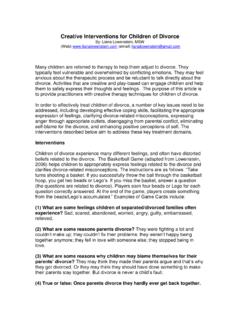




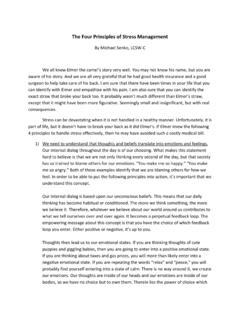
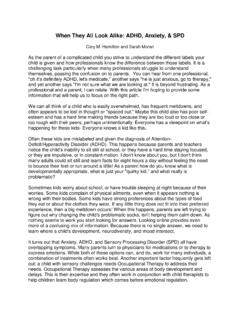
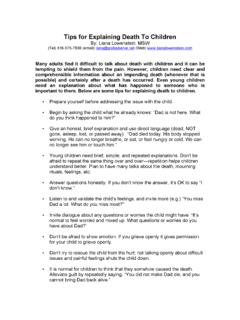


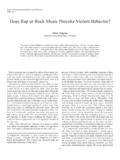
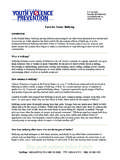


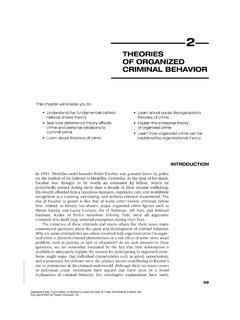

![Tough Guise 2 [Official Transcript] - Media Ed](/cache/preview/c/3/b/5/2/d/3/e/thumb-c3b52d3e6a3437c17d6d8ad6485bd936.jpg)